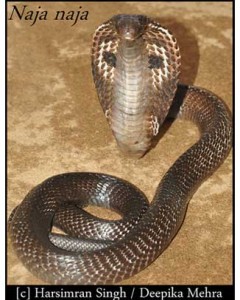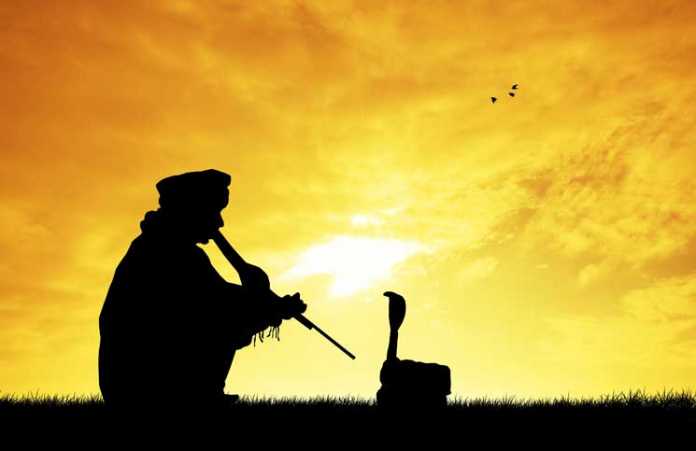Does this following scene sound familiar to you?
A typical Indian Snake Charmer wearing a traditional white or red turban on his head, sitting on the floor in a bustling street, playing a Pungi flute, with a big basket standing just a distance away. Inside the basket is a coiled Cobra, which slowly rises and sways, dancing to the tune of the Snake Charmer. The dancing snake, as well as the excited audience, are charmed…
There was a time in the past, when there were millions of Snake Charmers roaming the streets of India. The heart-stirring profession of the Indian Snake Charmer dates back thousands of years to ancient Egypt, where one form of snake charming is believed to have existed. Today however, this bewildering practice of pretending to hypnotize a snake, is most common in India. The Charmers use various snakes for their dazzling street shows, such as Vipers, Pythons and Mangrove snakes, but the typical Snake Charmer will always prefer to hypnotize one particular snake. Namely, the notorious Naja Naja, also known as the Indian Cobra, or the Spectacled Cobra.

The Snake Charmer and his Naja Naja
The Indian Cobra (Naja Naja), which can easily be identified by its majestic hood with a rounded mark, belongs to one of the four species which inflict the most snakebites in India. Its venom is highly toxic, and when threatened – it hisses and sways its marvelous hood, and sometimes – it strikes. The Naja Naja usually preys on mice, rats, frogs, toads, poultry, small mammals like the mongoose, and even other snakes. This Cobra’s preferred hunting time is night, from dusk till dawn, but it can also be seen at daytime.
The Naja Naja, whose colors can vary between grey, yellow, brown, reddish or black, has a special place in Indian culture and mythology, and today it’s even protected under Indian law. In religious Indian drawings, you can see the Naja Naja coiled around the neck of the Hindu God, Shiva. These unique Cobras, which live in dense forests, wetlands, agricultural lands and even in city outskirts, are highly revered and worshipped in countless rituals.

In the musical ritual of the Snake Charmer, however, it needs to be mentioned, that the Naja Naja is utterly deaf. Meaning – it cannot be dancing to the beautiful flute music. The Naja Naja is actually responding to the hand and body movements of the Charmer, and to the vibrations pounding the ground.
Today, it is believed that less than one million snake charmers are still active in India, and their numbers are declining dramatically. Thanks to popular channels like ‘Animal Planet’, ‘National Geographic’, or YouTube, which have diminished the fears and awe towards snakes, it has become a dying profession.
I’m pretty sure you’ve seen a similar world-renown scene somewhere in your life, either on Tv, on the net or live, but if not – watch this short video of an Indian Snake Charmer in action.
For more fast facts about Cobras click here.
For further discussion on snakes, scientific classifications, venom research and much more, check the resources available in “The New Encyclopedia of Snakes”, available on Amazon.com.
 |
Click here to take a glimpse at
|
If you feel like a having a real Book on Snake Bites, then get this book: ‘Snakes and Snakebite‘ by Visser, J. & Chapman D.S.
And if you love African Hot snakes, this is THE Book for you: ‘Dangerous Snakes of Africa’ by Spawls, S. and Branch, B.




[…] http://cobras.org/amazing-snake-charmer/ The Snake Charmer. Photo by Rossella Apostoli […]
[…] মূলত বাঁশি, সাপুড়ের গতিবিধি ও মাটিতে তৈরিকৃত কম্পনের জন্য […]